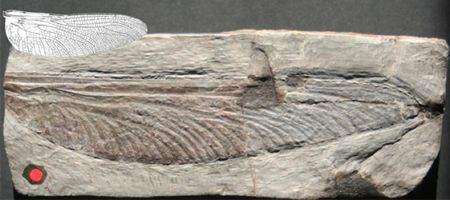We have the first birds to thank for the fact that there are no longer any two-foot-long bugs buzzing about in the skies, say University of California, Santa Cruz scientists.

In the oxygen-rich atmosphere that once prevailed, giant insects predominated – until the evolution of birds about 150 million years ago. From that point on, even though oxygen levels rose, insects got smaller.
Insects reached their biggest sizes about 300 million years ago during the late Carboniferous and early Permian periods. They included, for example, predatory griffinflies, giant dragonfly-like insects with wingspans of up to 28 inches.
It’s believed that high oxygen concentrations in the atmosphere – over 30 percent, compared to 21 percent today – allowed them to get enough oxygen through the tiny breathing tubes that they use instead of lungs.
For their study, Matthew Clapham and Jered Karr compiled a huge dataset of wing lengths from published records of fossil insects, and then compared this with oxygen levels over hundreds of millions of years of insect evolution.
“Maximum insect size does track oxygen surprisingly well as it goes up and down for about 200 million years,” says Clapham.
“Then right around the end of the Jurassic and beginning of the Cretaceous period, about 150 million years ago, all of a sudden oxygen goes up but insect size goes down. And this coincides really strikingly with the evolution of birds.”
With predatory birds about, they suggest, maneuverability became vital, favoring a smaller body size.
Another transition in insect size occurred at the end of the Cretaceous period, between 90 and 65 million years ago. A shortage of fossils makes it hard to be certain, but the researchers reckon this could be down to the continued specialization of birds, the evolution of bats and a mass extinction at the end of the Cretaceous.
“I suspect it’s from the continuing specialization of birds,” says Clapham. “The early birds were not very good at flying. But by the end of the Cretaceous, birds did look quite a lot like modern birds.”






